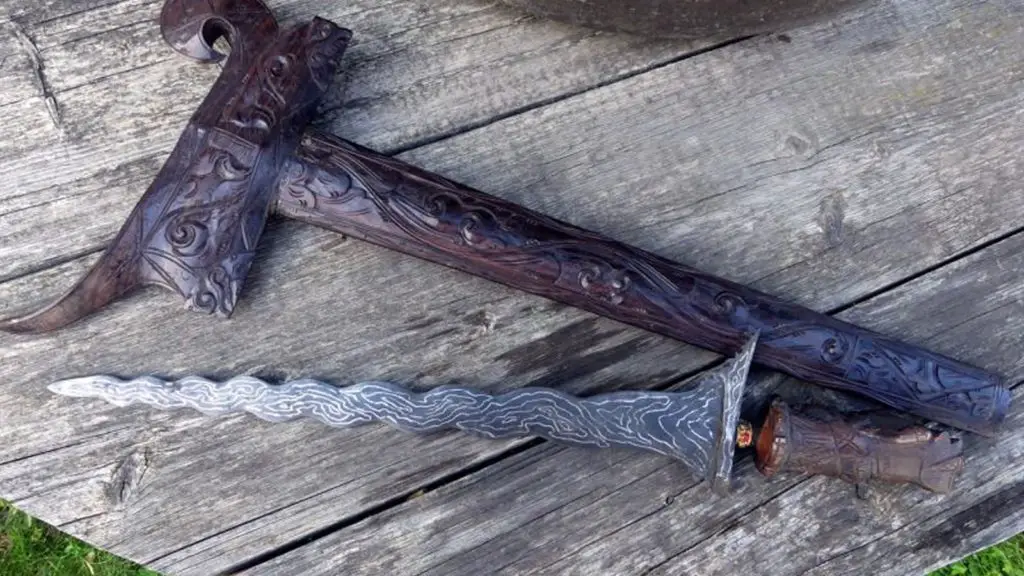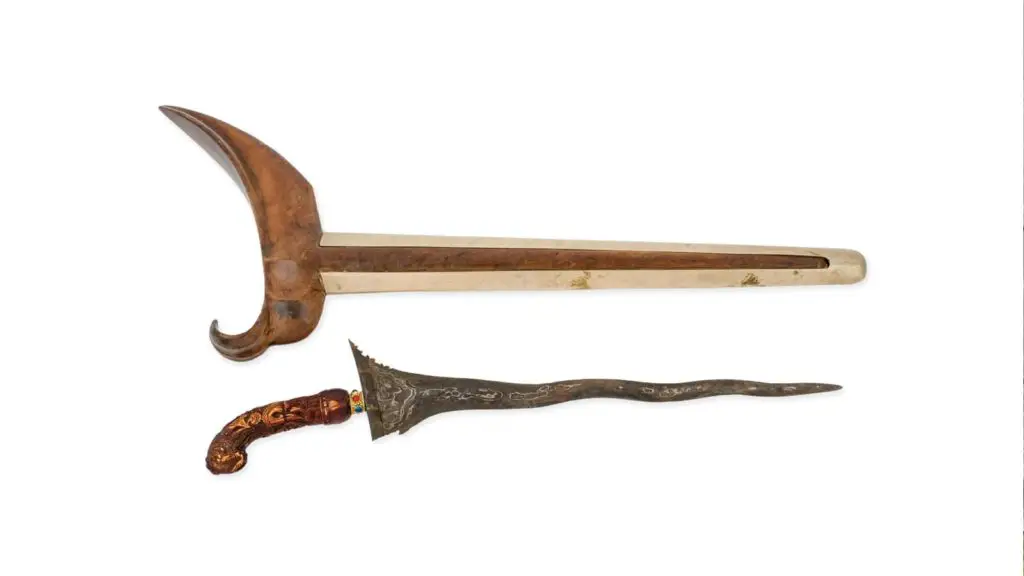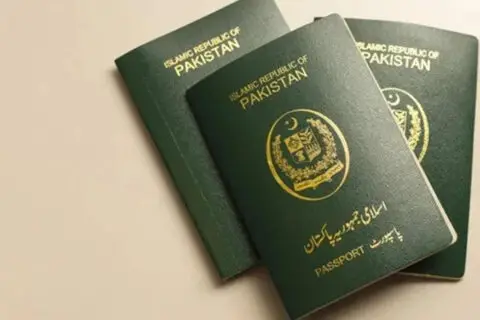
In this article (Why is the Kris Blade Wavy?), we will explore the enigmatic world of Kris blades, delving into their origins, craftsmanship, and cultural importance, unveiling the secrets behind their enduring allure. These blades, renowned for their distinct wavy design, have captured the imagination of blade enthusiasts and collectors for centuries. But what is the reason behind this unique and mesmerizing wavy pattern that sets these blades apart from other knives and swords?
A Brief Introduction to the Kris Blade
Before we unravel the mystery of these blade’s waviness, let’s first introduce this extraordinary weapon. Southeast Asian culture, notably that of nations like Indonesia, Malaysia, and the Philippines, has a strong historical and cultural connection to the Kris, a particular kind of dagger or sword. The blade’s unusual twin edges, asymmetrical hilt, and, of course, the wavy design embellishing its edge are what make it stand out.

The Artistry Behind the Wave
The Wavy Pattern
The most striking feature of a Kris blade is undoubtedly its wavy pattern, often referred to as “Pamor” or “Dapur.” This mesmerizing design is not merely for aesthetic purposes; it carries profound cultural and spiritual significance.
Cultural Significance
The wavy pattern on this blade is more than just a visual embellishment; it embodies a rich cultural narrative. It symbolizes the ebb and flow of life’s challenges and triumphs, mirroring the unpredictable journey we all traverse. This symbolism makes these blades not just a weapon but a symbol of protection and a talisman against adversity.
The Craftsmanship Behind the Kris Blade
The Forge
Creating these blade with their distinctive wavy pattern is a complex and highly skilled process. Skilled artisans, known as “Empu,” are entrusted with the task of crafting these extraordinary blades. They use a technique called “Besi Pamor” to create the wave-like pattern on the blade’s edge.
Metallurgical Mastery
The wavy pattern on these blades is achieved by laminating different types of iron and steel, each with distinct properties. These layers are repeatedly folded and hammered together, resulting in the characteristic ripple effect. The blade is then meticulously polished to reveal the intricate pattern.

The Kris Blade’s Legacy
Collector’s Item
Today, these blades are not only cherished as functional weapons but also as prized collector’s items. Their historical significance, cultural symbolism, and exquisite craftsmanship make them highly sought after by collectors and enthusiasts worldwide.
Symbol of Heritage
In the regions where the Kris holds cultural importance, it remains a symbol of heritage and identity. It is often passed down through generations, carrying with it the stories and traditions of its previous owners.

Conclusion (Why is the Kris Blade Wavy?)
In conclusion, the Kris blade’s wavy design is not merely a decorative element but a profound symbol of culture, craftsmanship, and resilience. Its undulating pattern reflects the ebb and flow of life’s journey and has made it an enduring icon in the world of blades and weaponry. Whether as a functional weapon, a collector’s treasure, or a cultural emblem, this blade continues to captivate hearts and minds, reminding us of the intricate connection between artistry and utility.
FAQs
Are Kris blades still used as weapons today?
While Kris blades are no longer widely used in combat, they hold cultural and ceremonial significance in many Southeast Asian communities.
Can I purchase an authentic Kris blade as a collector?
Yes, authentic Kris blades can be found in specialized antique shops and through reputable collectors and dealers.
What is the significance of the Naga in Southeast Asian culture?
The Naga is a mythical serpent often associated with water and fertility, holding a prominent place in the folklore and spiritual beliefs of the region.
How are Kris Blades made today?
The Naga is a mythical serpent often associated with water and fertility, holding a prominent place in the folklore and spiritual beliefs of the region.
Are there variations in the wavy patterns of Kris blades from different regions?
Yes, the wavy patterns can vary significantly based on the region and the artisan’s style, adding to the diversity of Kris blade designs.





